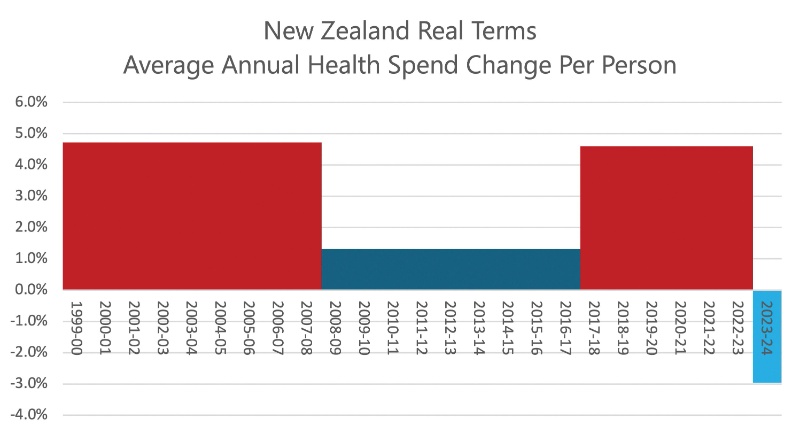The Latest Reserve Bank of NZ Discussion Papers
THE LATEST RESERVE BANK OF NEW ZEALAND DISCUSSION PAPERS
15 December, 2006
The following Discussion Papers
have been released on the Reserve Bank's
website. The
discussion papers are available
at
http://www.rbnz.govt.nz/research/discusspapers/
--
DP2006/10
A new core inflation indicator for New
Zealand
Domenico Giannone and Troy
Matheson
http://www.rbnz.govt.nz/research/discusspapers/dp06_10.pdf
DP2006/11
Assessing
the fit of small open economy DSGEs
Troy
Matheson
http://www.rbnz.govt.nz/research/discusspapers/dp06_11.pdf
DP2006/12
The
Present Value Model and New Zealand's current
account
Anella Munro and Rishab
Sethi
http://www.rbnz.govt.nz/research/discusspapers/dp06_12.pdf
--------------------------------------------------------
DP2006/10
A
new core inflation indicator for New Zealand
Domenico
Giannone and Troy
Matheson
http://www.rbnz.govt.nz/research/discusspapers/dp06_10.pdf
Abstract
This
paper introduces a new indicator of core inflation for New
Zealand, estimated using a dynamic factor model and
disaggregate price data. Using disaggregate price data we
can directly compare the predictive performance of our core
indicator with a wide range of other 'core inflation'
measures estimated from disaggregate prices, such as the
weighted median and the trimmed mean. Predictive performance
is assessed relative to a centred 2 year moving average of
past and future annual inflation outcomes. The 2 year
centred moving average is used as an analytical
approximation of the inflation target from the PTA, which
requires the Reserve Bank to keep annual inflation between 1
and 3 per cent on average over the medium term. We find that
our indicator produces relatively good estimates of this
characterisation of core inflation when compared with
estimates derived from a range of other
models.
DP2006/11
Assessing the fit of small open
economy DSGEs
Troy
Matheson
http://www.rbnz.govt.nz/research/discusspapers/dp06_11.pdf
Abstract
We
describe a simple extension of the Monacelli (2005) small
open economy model that incorporates a non-tradable good,
habit persistence and price indexation. The empirical fit of
eight different specifications of this model is then tested
in a Bayesian framework using data for three small open
economies: Australia, Canada, and New Zealand. The results
show that the model with a non-tradable good fits the data
better than the one-good model across all specifications
considered. In contrast to Rabanal and Rubio-Ramarez (2005),
we find that adding price indexation to either the one- or
two-good model deteriorates overall empirical
fit.
DP2006/12
The Present Value Model and New
Zealand's current account
Anella Munro and Rishab
Sethi
http://www.rbnz.govt.nz/research/discusspapers/dp06_12.pdf
Abstract
This
paper tests the present value model of the current account
on New Zealand data. There is some evidence in favour of the
PVM - the current account tests as stationary and
Granger-causes changes in national net income. However, the
cross-equation restrictions implied by the model are
rejected both individually and jointly. This result holds
for both the linear and non-linear versions of the tests.
The orthogonality test results are consistent with rejection
due to the presence of a transitory demand shock. We
conclude that a richer model is needed to understand current
account
dynamics.
ENDS


 Gordon Campbell: On The Americanising Of NZ’s Public Health System
Gordon Campbell: On The Americanising Of NZ’s Public Health System Rio Tinto & NZAS: Archaeological Project Underway From Historic Excavations At Tiwai Point
Rio Tinto & NZAS: Archaeological Project Underway From Historic Excavations At Tiwai Point New Zealand Deerstalkers Association: NZDA Urges Hunters To Prioritise Safety This Roar Season
New Zealand Deerstalkers Association: NZDA Urges Hunters To Prioritise Safety This Roar Season PSA: 1000 Days Since Landmark Pay Equity Deal Expired - Workers Losing $145 A Week
PSA: 1000 Days Since Landmark Pay Equity Deal Expired - Workers Losing $145 A Week Grace Tinetali-Fiavaai, RNZ: Widow Of Fa'anānā Efeso Collins Seeks Inquiry Into His Death - 'Unanswered Questions'
Grace Tinetali-Fiavaai, RNZ: Widow Of Fa'anānā Efeso Collins Seeks Inquiry Into His Death - 'Unanswered Questions' Te Pāti Māori: Te Pāti Māori Call For Mandatory Police Body Cameras
Te Pāti Māori: Te Pāti Māori Call For Mandatory Police Body Cameras NZ First Party: NZ First Introduces the “Conscience Acts Referendums Bill”
NZ First Party: NZ First Introduces the “Conscience Acts Referendums Bill”


